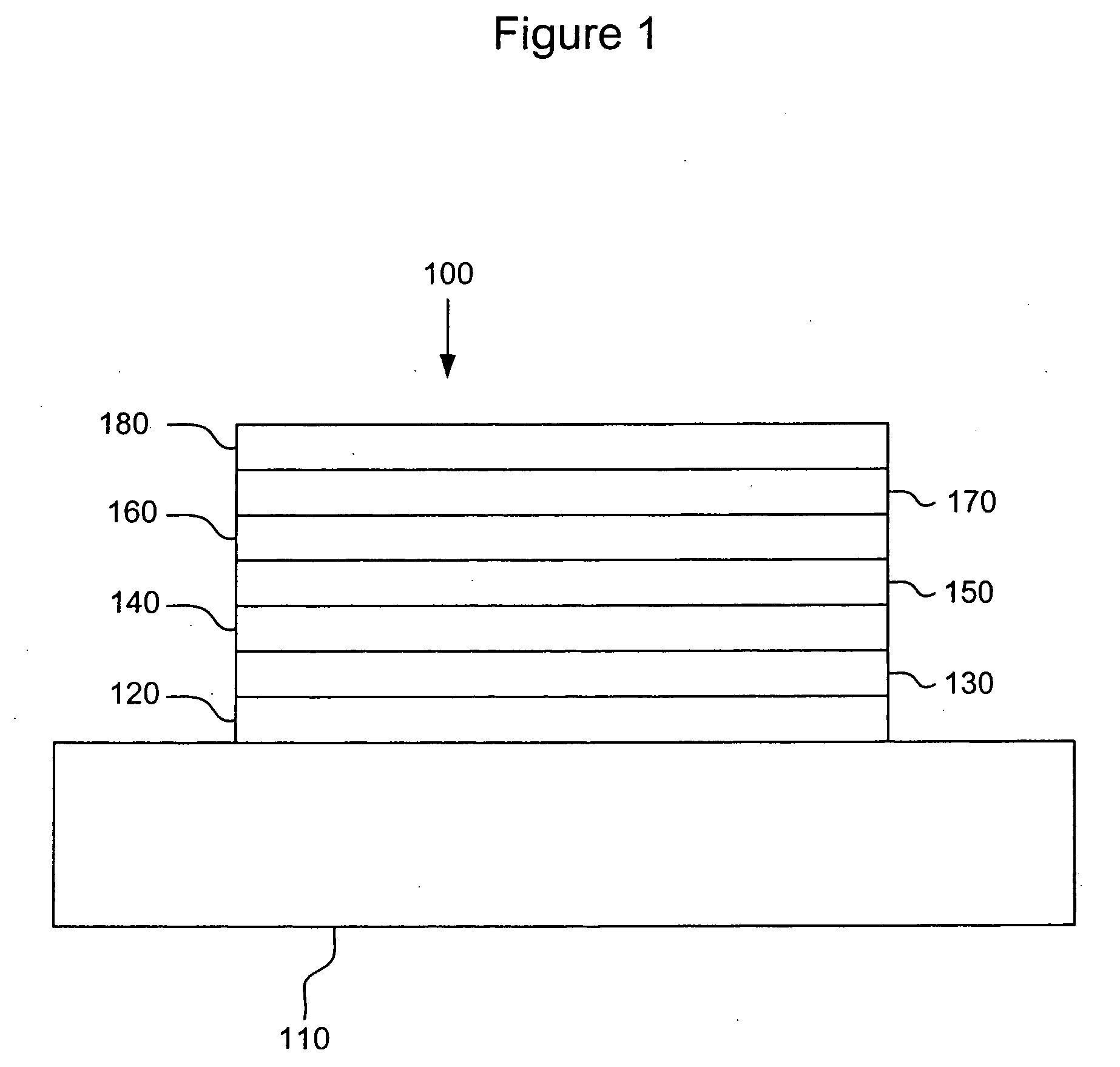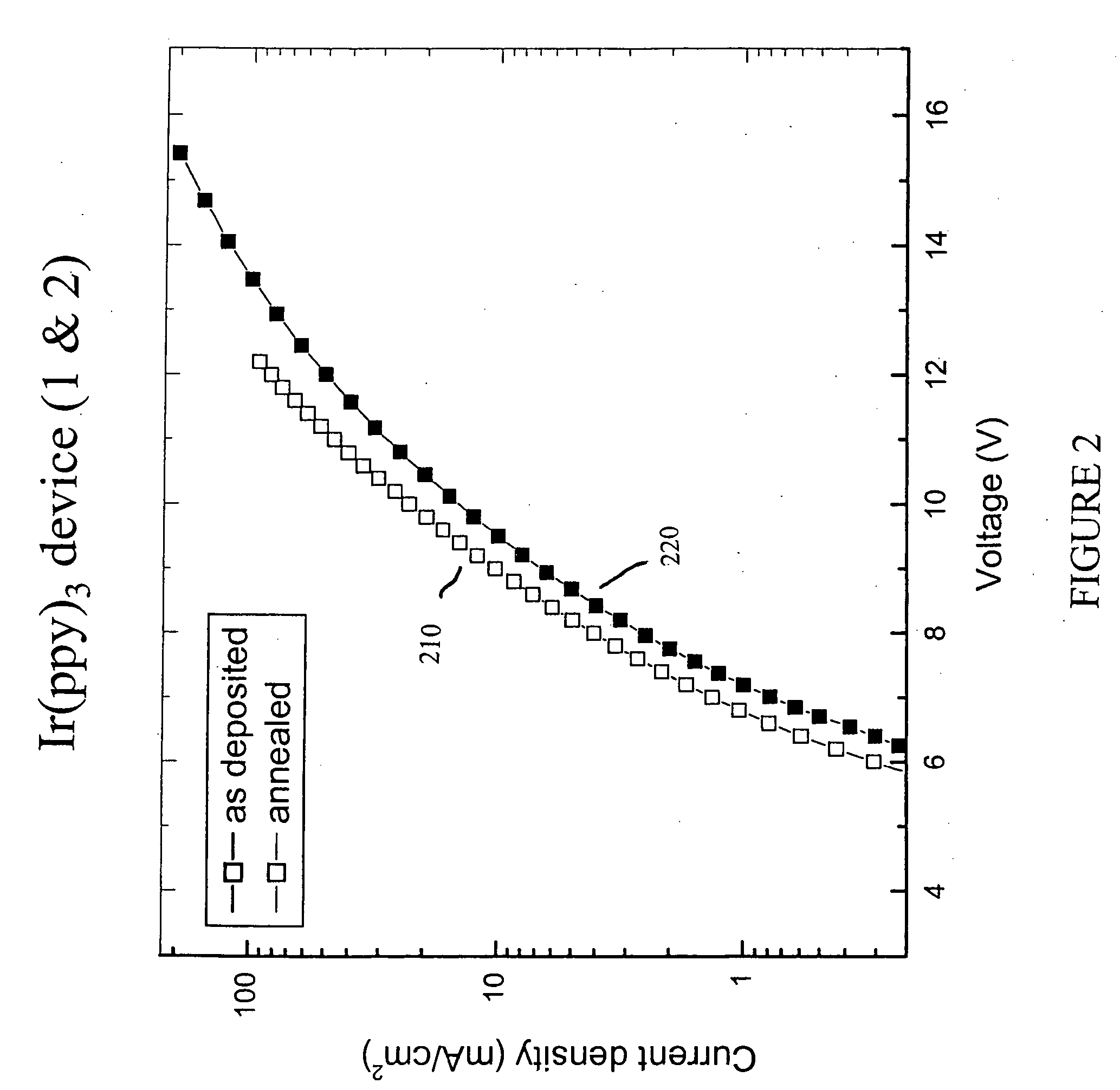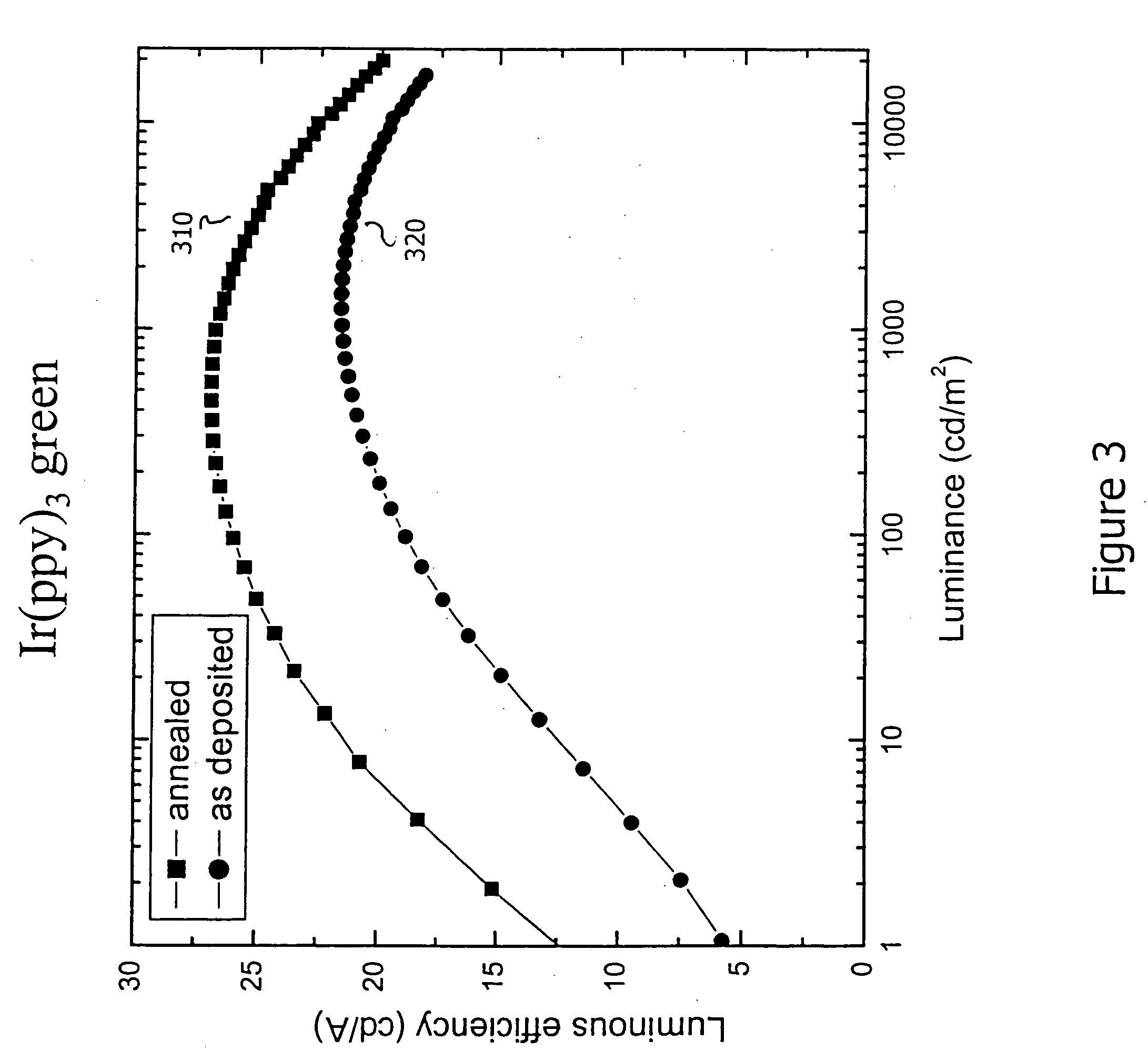Annealing modified interface in organic light emitting devices
a light-emitting device and modified interface technology, applied in the direction of discharge tube/lamp details, discharge tube luminescnet screens, transportation and packaging, etc., can solve the problem of more difficult to tune inorganic emissive materials
- Summary
- Abstract
- Description
- Claims
- Application Information
AI Technical Summary
Benefits of technology
Problems solved by technology
Method used
Image
Examples
example 1
[0039] The following materials were deposited, in sequence: CuPc (100 Å), NPD (150 Å). The CuPc and NPD were annealed at 80 C for one hour, and the device was then cooled to room temperature. After annealing, the following materials were deposited in sequence: NPD (50 Å), CBP:Ir(Ppy)3 (300 Å), BAlq (100 Å), Alq3 (400 Å), LiF (10 Å), Al (1000 Å). All steps, including annealing, were performed in situ without removing the device (“device 1”) from vacuum. The Ir(Ppy)3 emissive layer of device 1 emits green light.
example 2
[0040] The following materials were deposited, in sequence: CuPc (100 Å), NPD (300 Å), CBP:Ir(Ppy)3 (300 Å), BAlq (10 Å), Alq3 (400 Å), LiF (10 Å), Al (1000 Å). All steps were performed in situ without removing the device from vacuum. The resultant device (“device 2”) has the same layered structure as device 1, except that there was no annealing during the fabrication of device 2. As with device 1, device 2 is designed to emit green light.
example 3
[0041] A device (“device 3”) was fabricated using the method described in Example 1. However, after depositing NPD (150 Å), 300 Å of CBP:BTPIr was deposited instead of 300 Å of CBP:Ir(Ppy)3. As a result, device 3 is designed to emit red light.
PUM
 Login to View More
Login to View More Abstract
Description
Claims
Application Information
 Login to View More
Login to View More - R&D
- Intellectual Property
- Life Sciences
- Materials
- Tech Scout
- Unparalleled Data Quality
- Higher Quality Content
- 60% Fewer Hallucinations
Browse by: Latest US Patents, China's latest patents, Technical Efficacy Thesaurus, Application Domain, Technology Topic, Popular Technical Reports.
© 2025 PatSnap. All rights reserved.Legal|Privacy policy|Modern Slavery Act Transparency Statement|Sitemap|About US| Contact US: help@patsnap.com



